Korg TP-2 Handleiding
Korg
Mengpaneel
TP-2
Bekijk gratis de handleiding van Korg TP-2 (17 pagina’s), behorend tot de categorie Mengpaneel. Deze gids werd als nuttig beoordeeld door 65 mensen en kreeg gemiddeld 4.6 sterren uit 33 reviews. Heb je een vraag over Korg TP-2 of wil je andere gebruikers van dit product iets vragen? Stel een vraag
Pagina 1/17

Owner’s Manual
© 2004 KORG INC. 1508 CTH
Printed in Japan
Precautions
Location
Using the unit in the following locations can result in a malfunction.
• In direct sunlight
• Locations of extreme temperature or humidity
• Excessively dusty or dirty locations
• Locations of excessive vibration
• Close to magnetic fields
Power supply
Please connect the designated AC/AC power supply to an AC outlet of
the correct voltage. Do not connect it to an AC outlet of voltage other
than that for which your unit is intended.
Interference with other electrical devices
Radios and televisions placed nearby may experience reception
interference. Operate this unit at a suitable distance from radios and
televisions.
Handling
To avoid breakage, do not apply excessive force to the switches or
controls.
Care
If the exterior becomes dirty, wipe it with a clean, dry cloth. Do not use
liquid cleaners such as benzene or thinner, or cleaning compounds or
flammable polishes.
Keep this manual
After reading this manual, please keep it for later reference.
Keeping foreign matter out of your equipment
Never set any container with liquid in it near this equipment. If liquid gets
into the equipment, it could cause a breakdown, fire, or electrical shock.
Be careful not to let metal objects get into the equipment. If something
does slip into the equipment, unplug the AC/AC power supply from the
wall outlet. Then contact your nearest Korg dealer or the store where the
equipment was purchased.
THE FCC REGULATION WARNING (for U.S.A.)
This equipment has been tested and found to comply with the limits
for a Class B digital device, pursuant to Part 15 of the FCC Rules.
These limits are designed to provide reasonable protection against
harmful interference in a residential installation. This equipment
generates, uses, and can radiate radio frequency energy and, if not
installed and used in accordance with the instructions, may cause
harmful interference to radio communications. However, there is no
guarantee that interference will not occur in a particular installation. If
this equipment does cause harmful interference to radio or television
reception, which can be determined by turning the equipment off and
on, the user is encouraged to try to correct the interference by one or
more of the following measures:
• Reorient or relocate the receiving antenna.
• Increase the separation between the equipment and receiver.
• Connect the equipment into an outlet on a circuit different from that
to which the receiver is connected.
• Consult the dealer or an experienced radio/TV technician for help.
• Unauthorized changes or modification to this system can void the
user's authority to operate this equipment.
CE mark for European Harmonized Standards
CE mark which is attached to our company’s products of AC mains
operated apparatus until December 31, 1996 means it conforms to
EMC Directive (89/336/EEC) and CE mark Directive (93/68/EEC).
And, CE mark which is attached after January 1, 1997 means it
conforms to EMC Directive (89/336/EEC), CE mark Directive (93/68/
EEC) and Low Voltage Directive (73/23/EEC).
Also, CE mark which is attached to our company’s products of Battery
operated apparatus means it conforms to EMC Directive (89/336/
EEC) and CE mark Directive (93/68/EEC).
IMPORTANT NOTICE TO CONSUMERS
This product has been manufactured according to strict specifications
and voltage requirements that are applicable in the country in which it
is intended that this product should be used. If you have purchased
this product via the internet, through mail order, and/or via a tele-
phone sale, you must verify that this product is intended to be used in
the country in which you reside.
WARNING: Use of this product in any country other than that for
which it is intended could be dangerous and could invalidate the
manufacturer’s or distributor’s warranty.
Please also retain your receipt as proof of purchase otherwise your
product may be disqualified from the manufacturer’s or distributor’s
warranty.
KORG INC.
4015-2 Yanokuchi, Inagi-city, Tokyo 206-0812 Japan

GR
TP-2 [ Tube Preamp ]
INPUT 1
INPUT 2
HI-Z
GAIN
TRIM
AD
COMP
SENS
LEVEL METER
+48V
PHANTOM
PHASE
LINK
OUTPUT 2
OUTPUT 1
S/PDIF OUT
SAMPLING
FREQUENCY
44 48 96
OUTPUT
LEVEL
LOWCUT TUBEHA
PAD S/P DIF
TRANSMIT
GR
HI-Z
GAIN
TRIM
AD
COMP
SENS
LEVEL METER
+48V
PHANTOM
PHASE OUTPUT
LEVEL
LOWCUT TUBEHA
PAD
Block diagram
Specifications
Input connectors: XLR-3-31 type (+48 V phantom power, switchable),
1/4” TRS phone jack (balanced / unbalanced is Hi-Z)
Input impedance: 4 k (XLR-3-31), 10 k (TRS phone Jacks),
1 M (TRS phone Jacks is Hi-Z)
Nominal level: –60 dBu to –12 dBu @ TRIM=max. — min PAD OFF
–34 dBu to +14 dBu @ TRIM=max. — min PAD ON
Maximum level: –48 dBu to 0 dBu @ TRIM=max. — min PAD OFF
–22 dBu to +26 dBu @ TRIM=max. — min PAD ON
Hi-Z
– 48 dBu to 0 dBu @ TRIM=max. — min PAD OFF
– 22 dBu to +12 dBu @ TRIM=max. — min PAD ON
Source impedance: ..................................................................................... 600
Vacuum tubes used: ................................................................................. 12AX7
Compression method: Vacuum tube compression using a photocoupler
Principal specifications
Frequency response:
10 Hz - 44 kHz ±1 dB @ output +4 dBu, 10 k load
S/N: ............................................................................................. 85 dB (typical)
A/D conversion: ............................................. 24-bit 64 times oversampling
Sampling frequency: ............................................. 44.1kHz, 48kHz, 96kHz
Analog output
Connectors: ................... XLR-3-32 type, 1/4” TRS phone jack (balanced)
Output impedance: ................................................................................. 150
Nominal level: ....................................................................................... +4 dBu
Maximum level: .................................................................................. +16 dBu
Source impedance: ................................................................10k or higher
Digital output
Connectors: .............................................................................. optical, coaxial
Format: ....................................... 24bit S/P DIF (IEC60958 / EIAJ CP-1201)
General
Power supply: .......................................... Included AC/AC power supply
Dimensions:
224(W) x 170(D) x 88(H)mm / 8.82”(W) x 6.69”(D) x 3.46”(H)
(including protrusions)
Weight: ................................................................................. 1.33 kg / 2.93 lbs
Included items
AC/AC power supply, Owner’s manual

Introduction
Thank you for purchasing the Korg TP-2 Dual Tube Preamp w/
Optical Compression and Digital Output. In order to enjoy long
and trouble-free use, please read this owner’s manual carefully,
and use your only as directed.TP-2
Features
The TP-2 is a dual-channel preamp featuring two 12AX7 vacuum
tubes, plus fast operating and transparent optical compression
and limiting circuitry. Designed to accept a variety of sources
over a wide range of levels, it is ideal for your most critical and
demanding recording applications.
In addition to both XLR and 1/4” TRS balanced outputs, the TP-
2 also features both optical and coaxial digital outputs (S/P DIF
format) allowing it to interface with other digital equipment, or
to serve as a stand alone AD converter.
Using a specially tuned version of our acclaimed Valve Force
circuit, the delivers the robust, musical warmth and mid-TP-2
low region presence typical of vacuum tubes. The optical
compression responds quickly and transparently, providing a
distinctly full analog body without adversely coloring the sound.
In addition, the optical compressor’s gain reduction and limiting
circuitry allow you to avoid any audio clipping while you’re
recording.
1. Parts and their function
7 8 9 11 1210
14 15 16 17 18
1
2
3
4
5
6
13
19
1. INPUT 1, INPUT 2 jacks
These are balanced inputs that combine XLR jacks and 1/4” TRS
phone jacks.
Unbalanced phone plugs may also be connected to the 1/4” jacks.
If you are using a condenser mic requiring phantom power, connect it
to the XLR jack.
1/4" TRS phone jack
XLR jack 2: HOT
1: GND
3: COLD
If you are using a guitar or the line output from an instrument,
connect it to the TRS phone jack.
GND COLD HOT GND HOT
Balanced phone plug Unbalanced phone plug
2. Phantom power switch/LED
This switch supplies +48V phantom power to condenser mics. The
LED will light if +48V power is being supplied. Power is supplied
only to the XLR jack. Turn this off (LED dark) if you’re using a
dynamic mic.
If a condenser mic is connected or disconnected with the phantom power
switch on, damage to your equipment may occur. For this reason, always
turn the phantom power switch off before connecting or disconnecting a
condenser mic.
3. Phase switch
If you are inputting a stereo source from audio equipment in which
the hot and cold pins are wired in reverse, the stereo image may be
unsteady or cancellation may occur. By pressing this switch in,
you can invert the phase of the input signal by 180 degrees to
compensate.
4. Gain trim knob
This knob adjusts the input gain. If the PAD switch is on (pushed in),
the range is +14 – –34 dBu. If the PAD switch is off, the range is –12 –
–60 dBu.
5. Hi-Z switch
This switch changes the impedance level of the TRS phone jack to
high impedance. It is on when the switch is pushed in. Turn this
switch on when connecting a high output impedance device such as
guitar or bass.
6. PAD switch
This switch lowers the level of the input signal by 26 dB. The pad is
on when the switch is pushed in. When a line level input source is
connected, turning the pad on will allow the gain trim knob to have a
wider useful range of adjustment.
7. Compressor mode switch
This switch changes the compressor’s response speed. Use the Fast
setting for short sounds such as drums or percussion, and the Slow
setting (press the switch in) for more sustained sounds, such as
vocals.
8. Low cut switch
This switch activates a 70 Hz –6 dB/oct low cut filter.
Use this to reduce unwanted low-frequency content. The filter is on
when the switch is pressed in.
9. Level meter
The meter shows the audio level. If the needle moves into the red
area above 0 dB, this indicates that digital clipping is occurring.
Set the gain trim knob and the compressor sensitivity knob to prevent
the needle from exceeding 0 dB.
Place the unit horizontally so that the level meters operate correctly.
The level meters indicate the level of the signal before it is sent to the
output level faders.
10. Gain reduction LED
This LED will light when gain reduction is being applied by the
compressor.
11. Compressor sensitivity knob
This specifies the audio level where the compressor begins to kick in.
Turning the knob toward the right will increase the sensitivity, so that
compression will be applied even at low levels.
If you don’t want to apply compression, turn this knob all the way to
the left.
Product specificaties
| Merk: | Korg |
| Categorie: | Mengpaneel |
| Model: | TP-2 |
Heb je hulp nodig?
Als je hulp nodig hebt met Korg TP-2 stel dan hieronder een vraag en andere gebruikers zullen je antwoorden
Handleiding Mengpaneel Korg

4 Mei 2023

17 April 2023

13 April 2023

6 April 2023

5 April 2023

22 Maart 2023

10 Maart 2023

31 Januari 2023

14 Januari 2023

10 Januari 2023
Handleiding Mengpaneel
- Alto Professional
- Monoprice
- Glemm
- Hobart
- Nektar
- Hyundai
- Crown
- Zelmer
- Solid State Logic
- Skytec
- Soundcraft
- TC Helicon
- Bifinett
- Atlas Sound
- Flama
Nieuwste handleidingen voor Mengpaneel
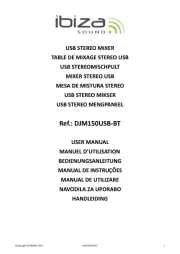
28 Juli 2025

15 Juli 2025
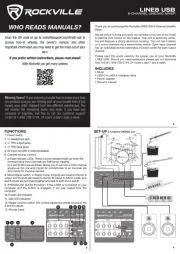
15 Juli 2025
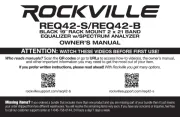
15 Juli 2025
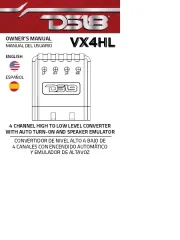
15 Juli 2025
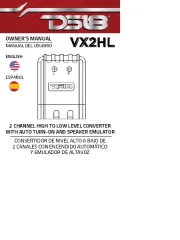
15 Juli 2025
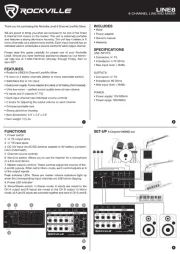
14 Juli 2025

14 Juli 2025

14 Juli 2025

14 Juli 2025